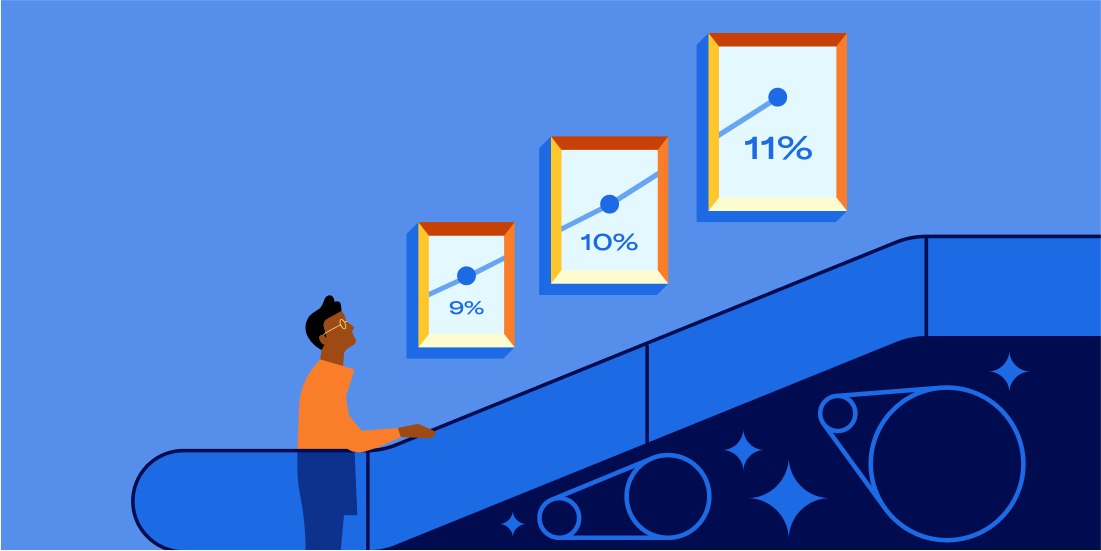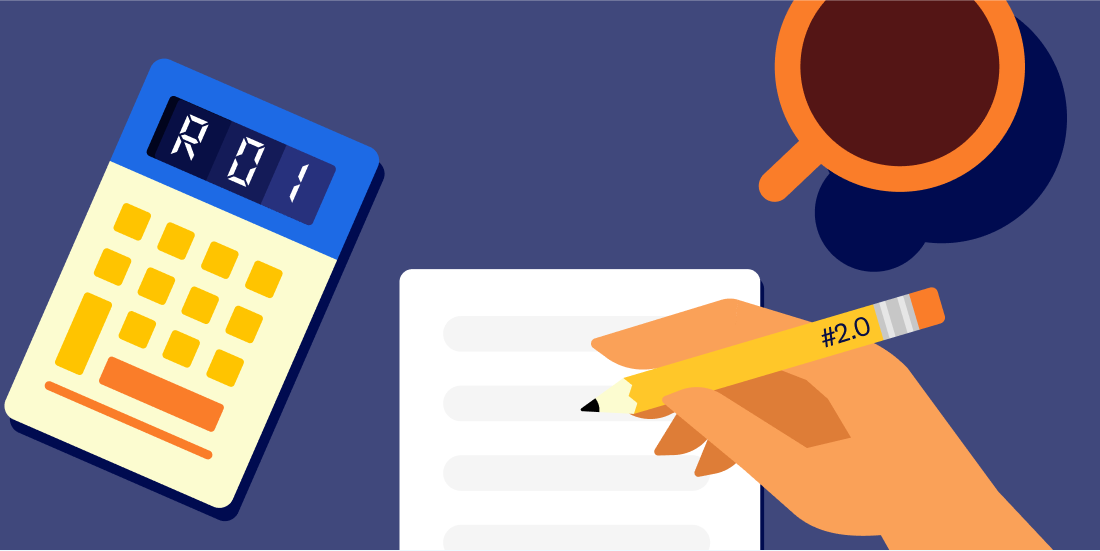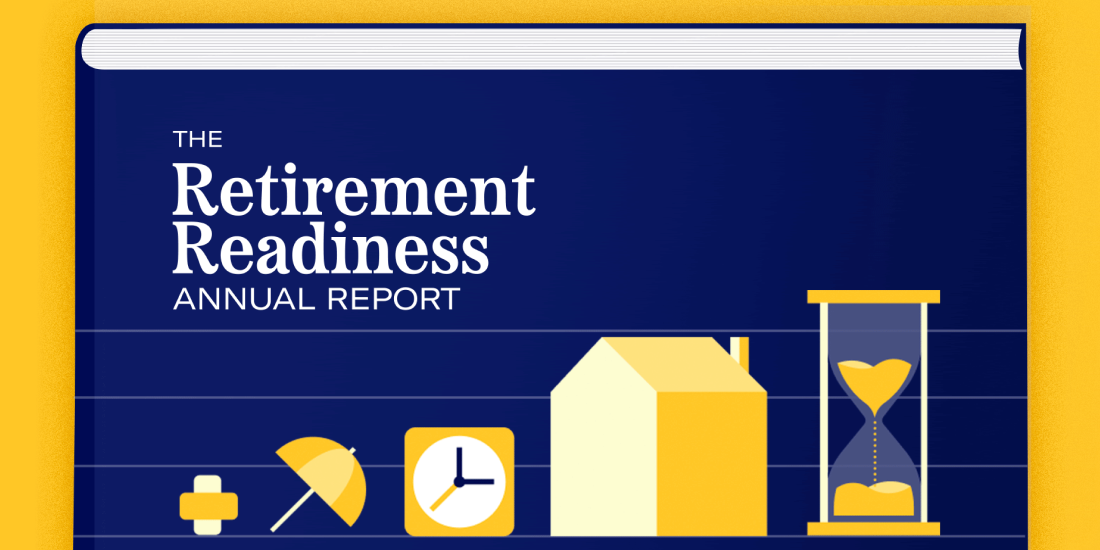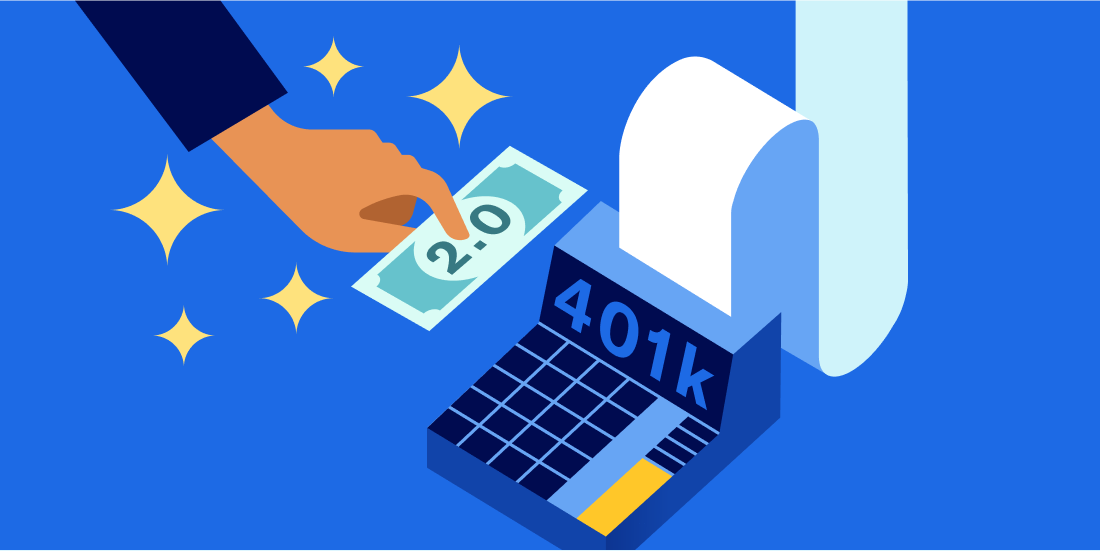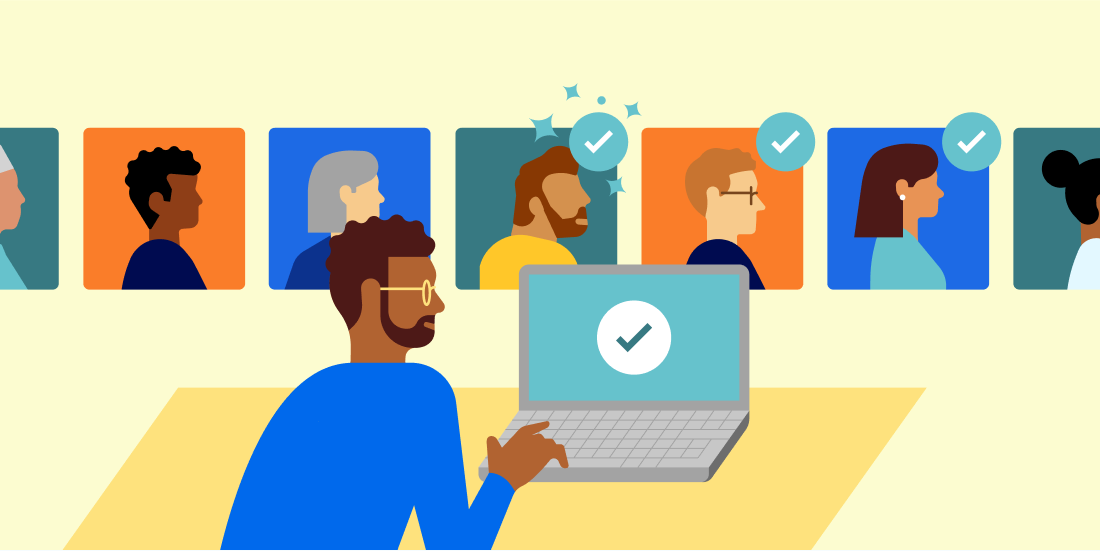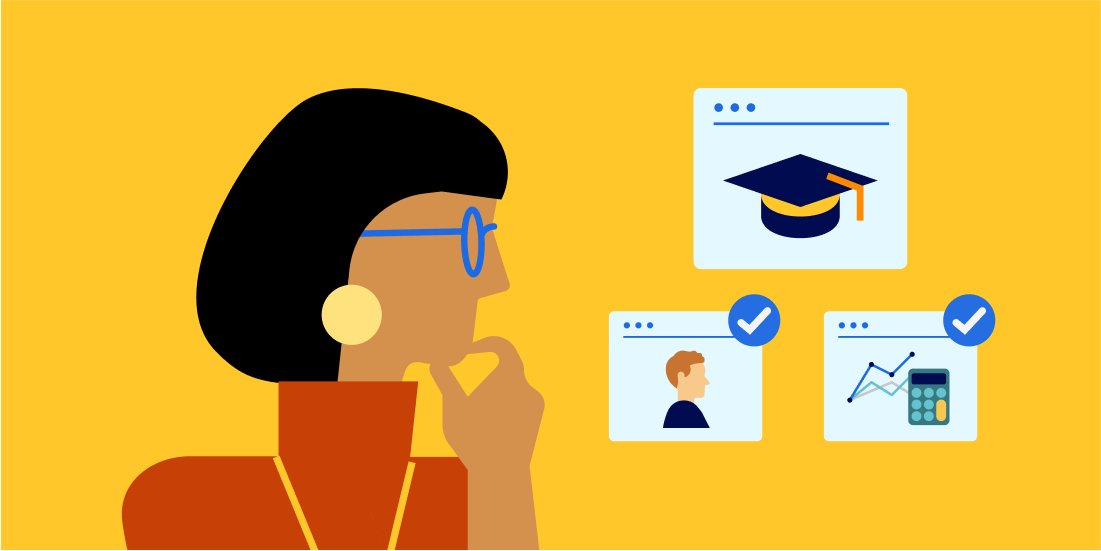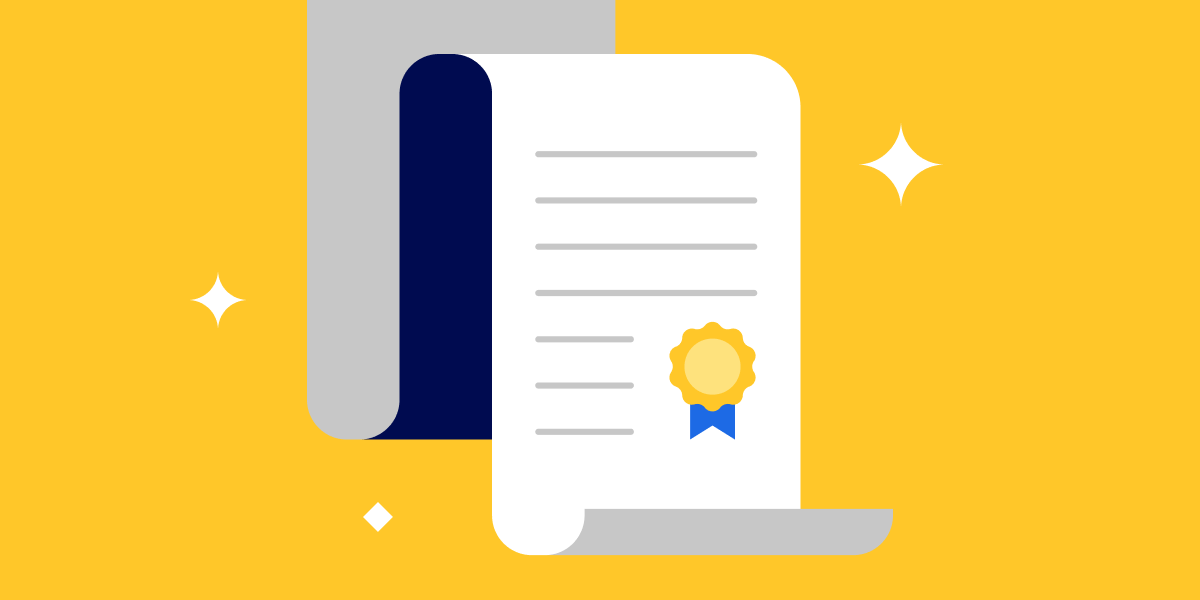Secure Act

Featured articles
-
![]()
At the top of HR lists in 2024: 401(k) match on student loan payments
With the SECURE 2.0 Act here, employers can offer a 401(k) match on student loan payments. And ...
At the top of HR lists in 2024: 401(k) match on student loan payments With the SECURE 2.0 Act here, employers can offer a 401(k) match on student loan payments. And the need may be larger than you think. “It’s at the top of our list.” That’s what Kraft-Heinz’s associate director of pensions said in an interview with Pensions&Investments. He was referring to a 401(k) match on student loan payments, one of the 90-plus provisions in the SECURE 2.0 Act. This optional provision allows for qualified student loan repayments to count as elective deferrals and qualify for 401(k) matching contributions from an employer. When an employer offers to match student loan contributions into a 401(k), employees can pay down their loans while also taking advantage of their 401(k) match. A proven benefit Prior to SECURE 2.0, 401(k) matching your employees’ student loan payments was not an option, but Abbot Laboratories saw a need (and an employee retention tool). In 2018, the IRS approved a request from Abbot to offer this new type of match. One year after launching the program, more than 1,000 Abbott employees had signed up, ranging in age from 20 to 60, proving there was demand for the benefit. Today, the provision in the SECURE 2.0 Act makes it possible for nearly all employers to offer a similar style benefit. Is the need greater than we think? It’s well known that Millennial and Gen-Z employees are often overburdened by student debt, but recent data shows that the need for a 401(k) match on student loan payments may be even greater than we think. A 2023 report by the National Institute on Retirement Security found that 13% of Gen-X employees (people born from 1965 to 1980) still have student loans, with an average balance of $40,000. The report went on to say, “...those Gen-Xers with student loan debt have lower net worths and are more likely to fall short of their retirement savings targets, at least in part due to student loan debt.” Knowing what your employees need As generations age, it will be important for each employer to understand the changing demographics, expectations, and needs of their employee base. If you are trying to attract a college-educated workforce, having relevant benefits in place will make hiring and retention more successful. Also, keeping track of the benefits offered by workforce competitors will allow for more strategic creation of benefits packages. Our solution for your need At Betterment at Work, our modern 401(k) platform helps streamline your administrative processes. We’ve designed offering a 401(k) match on student loan payments to be seamless and simple for you and your employees. Your employees simply record their qualified loan payments, and you can approve the match using an easy-to-use dashboard. -
![]()
How to implement 401(k) auto-escalation
Historically, employers have had the choice to add automatic escalation to their 401(k) plans, ...
How to implement 401(k) auto-escalation Historically, employers have had the choice to add automatic escalation to their 401(k) plans, but now SECURE 2.0 is requiring it to help people save. If you are faced with implementing automatic escalation, we've got you covered with advice on how to approach the change, and most importantly, how to communicate it to your employees. How SECURE 2.0 approaches automatic escalation Under SECURE 2.0, in addition to requiring automatic enrollment at a default rate between 3% and 10%, 401(k) plans are required to automatically escalate contributions at 1% per year to at least 10% (but no more than 15%). As always, employees can change their contribution rate or opt out of the plan at any time. Automatic escalation is a requirement for plans with an initial effective date on or after December 29, 2022. Businesses in existence for less than three years, as well as those with 10 or fewer employees, are exempt. The provision itself is effective on January 1, 2025. Consider this when setting your maximum escalation rate When you implement automatic escalation, you’ll need to decide your maximum rate, from 10% up to 15%. We like to think about automatic enrollment and automatic escalation together. Consider your default automatic enrollment rate when determining the limit to your escalation rate. For example, if you have a default enrollment rate of 8%, then a 15% escalation maximum rate might make sense, giving employees more room to grow their savings. Whereas a plan with a 3% default enrollment rate may want to consider a lower maximum escalation rate. Also, consider your employer match, if you offer one. Experts recommend saving 10-15% of income each year for retirement, and this includes the employer match. For example, if you are matching 5% and your automatic enrollment default rate is 8%, any employee who does not change their default rate is saving 13% of their income. Every company is different. It’s important to review different potential scenarios and keep in mind what your employees will respond best to when setting these default enrollment and escalation rates. Employee communications When it comes time to implement automatic escalation, how you communicate the change, along with any other plan changes, to your employees is incredibly important. If an employee doesn’t understand why the change is happening, they may fear it or be surprised to see an increased contribution if they were not expecting it. Instead, take the time to explain the purpose of automatic escalation. Consider this sample language when implementing the change with your employees: Recently, a new law was implemented called the SECURE 2.0 Act. Its purpose is to help Americans save more for retirement. Part of the Act that we’ll be adopting is called automatic escalation. Automatic escalation increases an employee’s contribution rate to their 401(k) plan by 1% each year until the contribution reaches [INSERT YOUR PERCENTAGE]. It’s designed to help everyone participating in our 401(k) to build retirement savings. Experts recommend saving 10-15% of your annual income for retirement and automatic escalation helps get closer to that amount without additional effort. But don’t worry: If you are not comfortable with the escalation, you have the option to change your contribution rate or opt out of the plan at any time. We’re excited about this change and are proud to continue to evolve our 401(k) program to make saving easier. Feel free to edit this language to fit your organization’s needs, including any mandatory communications. What’s most important is that your employees see automatic escalation as a positive change. -
![]()
The ROI potential of offering a 401(k) match on student loan payments
Over 20% of employees would consider leaving their jobs for a 401(k) match on their student ...
The ROI potential of offering a 401(k) match on student loan payments Over 20% of employees would consider leaving their jobs for a 401(k) match on their student loan payments. But can you afford to offer the benefit? In a 2022 Betterment survey of over 1,000 employees, we found that student loans are an important issue for many employees. 64% of employees said student loans have had an impact on their ability to save for retirement 21% of employees reported that a 401(k) match on student loan payments would entice them to leave their jobs. Generally, we believe that the more employees who participate in a 401(k) program, the less turnover a company will see. Data from payroll software provider Gusto backs up that belief. They report that employees with a 401(k) plan are 32% less likely to quit in any given month. We see a large opportunity for savvy employers to build stronger 401(k) programs to retain their employees. Adding benefits like a 401(k) match on student loan payments could be a difference maker. But how does an employer know if the costs of offering a 401(k) match on student loan payments is worth it? Let’s dive in and find out. First, some SECURE 2.0 fast facts Before we look at the potential ROI of this new match, let’s cover some fast facts about the provision included in the SECURE 2.0 Act. Effective date: January 1, 2024 401(k) student loan matching: Qualified student loan repayments could count as elective deferrals and qualify for 401(k) matching contributions from their employer. Employees who take advantage of this would be compliance tested separately. How it works: At a high level, there are three things to know. Employees are required to certify that they made loan payments. They do not have to show proof of payments if the employer doesn’t require it. An employer can rely on employee certification alone. Matching contributions must vest on the same schedule as salary deferral matching contributions. Employers can make matching contributions less frequently than salary matches, although contributions must be made at least once a year. Understanding the costs of a 401(k) match on student loan payments First, let's take a wider view of cost. Replacing a single employee may not directly show up on your company’s financial statements, but it's expensive, no matter the company, especially if it happens more than once. One report by SHRM cites employee replacement costs as being six to nine months of an employee’s salary. Another report by Gallup cites one-half to two times the employee's annual salary. Employee replacement costs to consider include: Hard costs: These are straightforward to quantify and include hiring costs like HR staff, technology, and job postings. Once an employee is hired there are also hard costs like onboarding training, new equipment, and processing paperwork. Soft costs: These can be murky to measure but impact every hiring decision. These include the time spent by employees who help with the hiring process, from interviews to position description reviews and onboarding planning. As a new employee joins the company, these costs continue with additional onboarding meetings and lowered productivity as the new team member gets up to speed. Now that you’ve considered the real costs of recruiting and onboarding a new employee (vs. retaining a good team member), we can talk about the cost of this new 401(k) match. Provision implementation costs may include: Participant Fee: If you are using a modern 401(k) tech platform, these costs are minimal often ranging from $5 to $10 per month. You can also consider passing these small costs on to the employee. Nondiscrimination testing: Depending on your 401(k) provider, an increase in participants may result in increases in fees for additional compliance testing. (Note: At Betterment at Work, there are zero additional compliance testing fees if your plan has an increase in participants.) Matching contribution costs: If more employees use the 401(k), contributions may increase, although some companies may have already budgeted for a portion of these in their overall 401(k) match budget. Administrative costs: Tracking self-certifications requires implementing a process. This can be reduced if your company leverages technology to streamline this workflow. There are costs to administering the 401(k) student loan match provision. But compared to losing a talented employee, provision costs may be far less. Think of the match benefit as an investment in talent. Calculating ROI of a 401(k) match on student loan payments It’s important to note that when calculating ROI for your company, you should take into consideration each employee’s unique value and the costs associated with replacing their role. To help illustrate, consider the following hypothetical example of an employee making $75,000 at a company offering a 6% 401(k) match. Estimated replacement costs: $37,500 to $150,000 one-time cost An employee making $75,000 could cost between $37,500 and $150,000 to replace using the benchmark of one-half to two times the employee's annual salary. Estimated 401(k) student loan match costs: $4,620 to $5,000 per year If that employee uses the 401(k) student loan matching program with a 6% match, the employer would pay $4,500 in matching contributions. We’ll add on $120 per year in estimated monthly participant plan fees plus potential administrative costs estimated at a few hundred dollars to process and test this employee’s student loan match. We see that with a full employer match plus administrative fees, we are still not even close to the costs associated with needing to replace the employee. It would take over seven years in 401(k) matching costs to reach the low-end cost of replacing the employee. That’s without considering the value a satisfied, tenured employee brings in workplace production, institutional knowledge, cultural contributions, and more.
All Secure Act articles
-
![]()
The key factors holding back your employees’ retirement readiness
The key factors holding back your employees’ retirement readiness And how the types of benefits you offer can help. Broadly speaking, the economy did alright in 2023. Inflation slowed, stocks rallied, and employment remained strong. But you wouldn’t know it by looking at the current mood of American workers. According to our latest annual survey of 1,000 full-time employees, their levels of financial wellness trended down in 2023 at the same time their financial anxiety climbed by seven percentage points. So what gives? We sifted through the data and saw several trendlines emerge. Explore them in full detail in our Retirement Readiness annual report – and keep reading below for a preview. Inflation’s ripple effect on retirement Inflation slowed significantly in 2023, but that’s not to say that all prices fell. The average American household spent $709 more per month in 2023 compared to 2021 on things like rent, groceries, and gas. Until wage growth catches back up to inflation, workers will continue to feel their paychecks pinched, and two casualties are taking shape as a result: Emergency funds: Although more than half (52%) of employees reported currently having an emergency fund, that’s a 7% drop from 2022, and 14% decrease from 2021. Retirement savings: A worrisome 3 in 10 workers tapped into retirement savings in the past year to pay for short-term expenses, a significant setback for their long-term goals. All of this has left workers feeling stressed. More than half (58%) went so far as to say the anxiety makes it hard for them to focus at work. But our research shows that some employer support and benefits can go a long way toward calming the waters. The growing role of financial benefits in retention If short-term expenses are depleting workers’ savings, it’s no surprise that a strong 401(k) and financial wellness benefits program remains at the top of workers’ wish lists. The importance of these benefits continues to grow as well, with 70% of workers saying financial wellness benefits are more important now than a year ago. A growing percentage of workers (60%) even say they’d be enticed to leave their job for better financial benefits. Student loan debt, however, continues to prevent the adoption of financial benefits for many. 64% of workers said student loan debt impacts their ability to save for retirement, and when asked why they don’t take advantage of their employer’s benefits, by far the most common reason was their paycheck simply won’t stretch that far. On this front, good news is just around the corner. Thanks to the SECURE 2.0 Act, employers will soon be able to offer a 401(k) match on their employees’ qualifying student loan payments, helping workers tackle two goals at once. -
![]()
How tax credits can make offering a 401(k) affordable
How tax credits can make offering a 401(k) affordable See how new tax credits under the SECURE 2.0 Act could help with a new 401(k) plan’s implementation costs. After the passing of the SECURE 2.0 Act, CNBC published an article titled, “There may never be a better time to create a retirement plan.” The article largely focused on the increased tax credits smaller businesses can receive under the Act. These tax credits may amount to sizable savings for smaller employers looking to start a 401(k) plan. For that reason, we tend to agree with CNBC: this really may be the best time there has ever been to start a 401(k). What are the SECURE 401(k) tax credits? For businesses with 100 or fewer employees, there are three main tax credits to consider: Startup Tax Credit: Provides businesses with fewer than 100 employees a three-year tax credit for up to 50% of plan start-up costs. Increases the tax credit to up to 100% of the plan start-up costs for employers with 50 or fewer employees. The credit is based on the greater of $500 OR $250 per non-highly compensated employee (NHCE), capped at $5,000. Employer Contribution Credit: Offers a new tax credit to employers with 50 or fewer employees, encouraging direct contributions to employees, as much as $1,000 per participating employee with wages less than $100,000 (indexed annually). The credit covers the first five years of the plan allowing 100% of the employer contribution to be claimed in the first and second tax years, 75% in the third year, 50% in the fourth year, and 25% in the fifth year. The credit also applies to employers with 51-100 participants, but the amount of the credit is reduced by 2% per employee over 50 employees earning less than $100,000 per year. Automatic Enrollment Credit: Employers with new or established 401(k) plans that add automatic enrollment can take advantage of a $500 tax credit. Employers can claim this tax benefit for up to three tax years if they have 100 or fewer eligible employees. Sample scenario: Understanding the math To illustrate how tax credits can impact a business, consider the following hypothetical scenario for a business starting a new 401(k) with 25 participating NHCEs with wages less than $100,000 and a $3,000 average annual employer matching contribution per employee. Startup Tax Credit Employer Contribution Credit Automatic Enrollment Credit Total Credits Year 1 $5,000 ($250 per NHCE up to $5,000) $25,000 (100% or $1,000 max per employee) $500 ($500 per year) $30,500 Year 2 $5,000 ($250 per NHCE up to $5,000) $25,000 (100% or $1,000 max per employee) $500 ($500 per year) $30,500 Year 3 $5,000 ($250 per NHCE up to $5,000) $25,000 (75% or $1,000 max per employee) $500 ($500 per year) $30,500 Year 4 $0 (No credit) $25,000 (50% or $1,000 max per employee) $0 (No credit) $25,000 Year 5 $0 (No credit) $18,750 (25% or $1,000 max per employee) $0 (No credit) $18,750 Note: All information provided above is hypothetical for educational purposes only. For employers using the employer contribution tax credit, a tax deduction won't typically apply. Please review scenarios unique to your plan with your accountant to decide which tax credits and deductions are best for you. Three steps to make sure you get your tax credits Know the provisions: You’re already reading this, so you’re headed in the right direction. If you are considering starting a 401(k) plan, be sure to research both the tax credit and other SECURE 2.0 provisions. Know your plan: Whether you are starting a new plan or adding features to an established plan, to make the most of SECURE 2.0, you’ll need to review how your plan interacts with the law’s provisions and understand if your business is eligible. Talk to your tax adviser: Once you have a firm grasp of SECURE 2.0 provisions and how they impact your plan, reach out to your accountant and/or tax professional to plan for potential tax credits. They can walk you through your business’s situation and help you complete Form 8881. -
![]()
How 401(k) automatic enrollment can benefit your employees and your business
How 401(k) automatic enrollment can benefit your employees and your business SECURE 2.0 mandates automatic enrollment for newer plans. Let’s look at the benefits for your business and your employees. Let’s take a look at how the new default for 401(k) plan enrollment can be a win-win for your business and your employees. SECURE 2.0 makes automatic enrollment the default Under the SECURE 2.0 Act, automatic enrollment is a requirement for plans with an initial effective date on or after December 29, 2022. The provision itself is effective on January 1, 2025. Additionally, businesses in existence for less than three years, as well as those with 10 or fewer employees, are exempt. The provision: Requires plans to automatically enroll employees at a default rate between 3% and 10%. Must offer participants who are automatically enrolled the ability to request a withdrawal of their contributions within 90 days of their first contribution. As before, must allow employees to change their contribution rate or opt out of the plan at any time. Even though the Act doesn’t require implementation until January 1, 2025, you may want to get ahead of the curve and implement automatic enrollment now. It can save you operational stress while showing your employees that you care about their savings. A win for your business Automatic enrollment requires some upfront implementation, but there are ongoing benefits to your business as a result. Increased plan participation: According to the IRS, automatic enrollment can increase employee participation, which may result in various positive outcomes. More plan participation could result in increased tax deductions if you offer employer-matching contributions. Higher participation may increase the likelihood of your plan passing nondiscrimination testing since, by default, automatic enrollment does not favor specific employees. Help attract and retain talent: A 401(k) plan with high participation could prove to be a crucial aspect in building a strong workforce. Our research has found that about 50% of employees would be enticed to leave their jobs for a 401(k) plan at another employer. You may be able to retain more employees if they see the value of your benefits package, specifically your 401(k)—and automatic enrollment makes participating easier for everyone. Automatic enrollment tax credit: Adding automatic enrollment, even if your plan isn’t mandated to, can provide you with a tax credit. Employers that add automatic enrollment to a new or existing plan can take advantage of a $500 tax credit. Employers can claim this tax benefit for up to three tax years if they have 100 or fewer eligible employees. Embracing automatic enrollment can yield positive results for your business, but as we’ll see next, the results may be even more meaningful for the financial lives of your employees. A win for your employees Simply put, automatic enrollment makes it easier for employees to save for retirement. That’s the whole point of the SECURE 2.0 Act. And the data speaks for itself: Recent industry data reported by BenefitsPRO found that plans with automatic enrollment saw a 93% participation rate compared with a participation rate of 70% for plans with voluntary enrollment. The National Association of Plan Advisors reported that automatic enrollment helps close the retirement savings gap for communities of color, showing far greater active participation rates within minority groups when employees are automatically enrolled. By changing the default to automatically enroll staff, you can expect more employees will save for retirement. That can be life-changing for many who may never otherwise have started. How does automatic enrollment under SECURE 2.0 actually work? Beginning in 2025, the SECURE 2.0 Act makes Eligible Automatic Contribution Arrangement (EACA) the default for all 401(k)s created December 29, 2022 or later, again with a few exceptions. That means for those plans, employees’ deferrals must be set between 3% and 10%. Newly auto-enrolled participants must also have a 90-day window to request their funds back. You can also consider a Qualified Automatic Contribution Arrangement (QACA) by way of a Safe Harbor 401(k) plan. That means you’ve already committed to, among other things, a specific threshold of employer contributions. Beginning in 2025, here are the options for newly-created plans: Beginning in 2025, for all plans with effective dates of December 29, 2022 or later Eligible Automatic Contribution Arrangement (EACA) Qualified Automatic Contribution Arrangement (QACA) Employees enrolled at preset contribution rate between 3% and 10% ✓ ✓ Employees can opt out or change contribution rate ✓ ✓ Employees can request refunds of deferrals within first 90 days ✓ ✓ Requires employer contributions (i.e., Safe Harbor) and accelerated vesting schedule ✓ -
![]()
How to decide if you should offer a 401(k) match on student loan payments
How to decide if you should offer a 401(k) match on student loan payments SECURE 2.0 gives 401(k) plan sponsors the option to offer matching contributions on qualified student loan payments. Our three-step process balances the needs of your people, your budget, and your operations to help you as you decide if offering a 401(k) match on student loan payments is right for your company. Step 1: Assess your people’s needs When thinking about your team, it’s important to consider your current employees and future hires. The workforce is evolving and the needs of your employees may evolve as you hire. Your current employee’s needs: You’ll want to review your workforce’s current participation in your 401(k) plan. If you see that enrollment and savings are high, you may not have a need. On the other hand, if you see larger portions of younger graduates not enrolled, student loan matching may be a good fit. If feasible, talk with your employees to better understand their needs. Remember, it’s not always younger employees who are paying student loans. (Tip: If you offer other student loan benefits, like direct reimbursements, look at who is using those benefits and whether or not those employees are also contributing to their 401(k). A 401(k) match on student loan payments may be a good fit if you see a savings problem.) Your future employee’s needs: Your workforce in a few years might look different than your workforce today. Consider the types of employees you want to attract over the coming years. For recent grads, especially when hiring for key roles, this new type of 401(k) match could be a differentiating factor when deciding where to accept a job. Knowing your employee’s needs is crucial to engagement and retention, but next, you’ll need to know how much that will cost. Step 2: Review your budget There are two cost aspects to consider when budgeting for offering a 401(k) match on student loan payments. Matching contributions: You’ll need to review the cost of matching contributions, considering employees whom you previously did not provide with matching contributions. Your goal is to calculate the incremental cost. You may already be budgeting for these potential contributions if you include them in your salary match budget. But it’s important to estimate the actual increase you could see year-over-year in matching contributions. Operational costs: Depending on your 401(k) provider, you may have technology-related costs, although they should be minimal in most cases. Also, consider “soft costs” like employee time used to manage operating processes. With the right technology, these operational costs can be relatively low. The goal of reviewing your budget is to walk away with a confident estimate of the total annual costs of offering the benefit. Knowing that, you can decide whether the cost makes sense. Ultimately, understanding the ROI of the decision is fundamental for your business. That’s why we recommend taking it a step further and calculating the ROI of offering a 401(k) match on student loan payments. Step 3: Understand your operational needs Anything new in business usually comes with process changes. And that’s true if you adopt a 401(k) match on student loan payments. When analyzing how to efficiently manage this new plan feature, consider the following: Automation via technology: Work with your plan’s tech platform to understand their capabilities. Ideally, most of the process will be streamlined for you and your employees. Human intervention: There will most likely be some manual intervention, such as approving qualified student loan payments in order to process the matching contributions. Understanding who on your team will complete these tasks can help create an efficient process and avoid operational issues post-implementation. We recommend mapping out a process as you initially launch a 401(k) match on student loan payments. You’ll be able to train your staff, explain the feature to employees, and make adjustments as needed. -
![]()
How to use SECURE 2.0 to enhance your total rewards program
How to use SECURE 2.0 to enhance your total rewards program Learn how the SECURE 2.0 Act can have a positive impact on your total rewards program. Plus, follow our checklist for a smooth implementation. Leading HR teams take a strategic approach to ensuring their employees see and feel the value of their total rewards programs. In a competitive business environment, total rewards—the monetary and non-monetary benefits you offer—can be the difference maker for attracting and retaining top talent. Optimize how you promote your total rewards program The SECURE 2.0 Act gives employers an opportunity to create even stronger 401(k) and retirement benefit offerings. Some employers may hesitate at the opportunity, fearing operational demands or added costs. But strategic leaders can capitalize on the new law. We encourage companies to view SECURE 2.0 as a chance to implement new, modern 401(k) features and to highlight the value of their 401(k) benefit as part of their total rewards program. Benefits that make a difference Although many SECURE 2.0 provisions are mandatory, the Act gives employers some implementation flexibility along with some optional provisions. Review provisions to see how they could be leveraged to increase the value of your 401(k) program. A sample of the provisions that you may find add value to your total rewards program include: 401(k) match on student loan payments (Optional): Consider your current and ideal future employees. If it’s common for them to have student loan debt, this provision can help them kickstart their retirement savings when they otherwise may not have been able to save. Automatic enrollment (Required for plans established after 12/29/22): Data has shown that 401(k) participation—and employee savings—dramatically increases when you automatically enroll employees, rather than requiring them to opt in. Plus, because automatic enrollment makes opening a 401(k) the default, the enrollment process can be streamlined for all eligible employees. Automatic escalation (Required for plans established after 12/29/22): Adding to automatic enrollment is the automatic escalation provision, requiring employers to increase employee contributions by 1% per year to at least 10% (but no more than 15%). This escalation will help employees get closer to the 10% to 15% mark that many financial experts recommend as the desired retirement savings rate. Your company can use this mandatory provision as an opportunity to provide financial education to employees around adequate retirement savings. Long-term, part-time employee eligibility (Required): This is a mandatory provision that could have a large impact depending on your employee base. If you find that you have a large portion of employees that fit into this group, you can clearly communicate the benefit these employees will receive. Communication is the key to success Communication drives the success of the 401(k) plan changes you make due to SECURE 2.0. It’s a big opportunity to engage with your employees. Rather than simply rolling out operational changes and sending mandatory paperwork to employees, take the time to explain how these changes are designed to help employees and their families. Think of this not as an operational change to your 401(k), but rather as a strategic change to your total rewards program. Pro tip: As you implement provisions from the SECURE 2.0 Act, it’s also an opportunity for you to re-educate your workforce on all benefits you provide. Take the time to develop an internal communications plan for your total rewards program. Think holistically and show employees the total value of their benefits and compensation. Checklist: Leveraging SECURE 2.0 in your total rewards program As you implement SECURE 2.0 provisions, build out a checklist to make sure you consider all relevant details. Here’s a list to get you started. Talk with your 401(k) plan provider: Understand how they are operationalizing each provision and what that means for your processes. Determine which optional provisions you will implement: Research each provision, consider surveying employees to measure demand, and conduct a budget analysis. Determine how you will implement mandatory provisions: Work with your management team to decide how to implement mandatory provisions such as automatic enrollment and escalation. Provide pre-launch communication to employees: Explain that positive changes are coming and what to expect. Distribute launch communication to employees: Hold meetings and distribute materials explaining new benefits including their value, timing of changes, and how to access benefits. Consider using a formal “total rewards statement” to show the value to employees. Communicate to prospective employees: Update total rewards listings on your website, job descriptions, and other public-facing locations to attract your ideal employees. Measure adoption and value: Working with your 401(k) provider, measure the adoption of your 401(k) features and use the data to communicate value to stakeholders including employees, management, and your board of directors. For a full overview of what to consider when building out a 401(k) plan, check out our Plan Design article. Our modern 401(k) platform meets your modern total rewards program At Betterment at Work, we’ve built a modern 401(k) platform with an all-in-one admin dashboard and payroll integrations to save time managing your plan. Not only are we a leading provider of modern financial benefits, but our team of experts is by your side providing topical educational content. We also help you take your 401(k) plan a step further with financial wellness features. Support your employees with 1:1 Financial Coaching, 529 Plans, and our Student Loan Management platform, including the option to easily provide your employees 401(k) matches on qualified student loan payments. -
![]()
Don't have a 401(k) plan? Why now may be the best time to offer one
Don't have a 401(k) plan? Why now may be the best time to offer one Learn how the SECURE 2.0 Act can make it easier for your business to offer a 401(k) plan and attract top talent. A 401(k) plan. For many, that’s a boring topic. But for business owners and leaders—especially if you don’t offer one—a modern 401(k) plan could be your secret to building a strong, loyal workforce. Let’s dive in to see how a 401(k) could help you overcome hiring and retention challenges, and learn why now might be the time to start offering one. Your challenge: Attracting and retaining top talent People are leaving their jobs at record rates: In 2022, over 50 million people left their jobs according to FED data, setting a record, besting 2021’s nearly 48 million. People are leaving their jobs for various reasons: We surveyed 1,000 employees and found that burnout or work/life balance topped the list at 31% but 26% left because they found a job with better benefits. We also found that 51% said that a 401(k) from a prospective employer would entice them to leave their job. That number increased to 57% when a 401(k) employer match was added. The struggle to attract (and retain) top talent is real. But you have an opportunity. Your opportunity: Leveraging the SECURE 2.0 Act The SECURE 2.0 Act is packed full of 90-plus provisions. We've highlighted a few key provisions that make it easier to offer a 401(k) that benefits you and your employees. Some could reduce (or even pay for) your plan's implementation costs. Others help you capture the long-term employee retention benefit that a 401(k) provides. Please note that this is not intended as legal guidance or as a comprehensive resource on all SECURE 2.0 provisions. The information provided below is for education purposes only and is subject to change. Tax credits for small employer plans Quick facts: Effective date: December 29, 2022 Startup tax credit: Tax credits are available to offset the costs of a new plan for up to three years. According to the legislation, plan sponsors with 100 employees and fewer can claim up to $5,000 in their first year. Employer contribution credit: This clause allows eligible businesses starting a new plan after 12/29/22 to claim back costs associated with making employer contributions toward employees’ 401(k)s. If your company adopts employer contributions as a part of your plan design, you may be able to claim these costs for up to five years. Automatic enrollment credit: Employers that establish a new 401(k) plan after 12/29/22 with automatic enrollment can take advantage of this credit. Employers can claim this tax benefit for up to three tax years if they have 100 or fewer eligible employees. Your opportunity: Reduced plan cost: A tax credit reduces the amount of taxes you may owe. For smaller employers with lower plan costs, the tax credit may actually cover all 401(k) plan implementation costs in the first three years. Regardless, the SECURE 2.0 Act has made implementing a 401(k) more affordable for many businesses. Employers can offer a 401(k) match on student loans Quick facts: Effective date: January 1, 2024 401(k) student loan matching: Qualified student loan repayments could count as elective deferrals and qualify for 401(k) matching contributions from their employer. Employees who take advantage of this would be compliance tested separately. Your opportunity: Employee retention: If you have employees with student loans, often early in their careers, offering to match their loan payments with 401(k) contributions can help them jumpstart saving for retirement. This becomes an attractive benefit that can help retain talent. Required automatic enrollment and escalation Quick facts: Effective date: January 1, 2025 Auto-enrollment: Requires plans established after 12/29/22 to automatically enroll employees at a default rate between 3% and 10%. Auto-escalation: Requires plans to automatically increase contributions by 1% per year to at least 10% (but no more than 15%). Exemptions: Small businesses with 10 or fewer employees and businesses newer than three years old are exempt. Opt-out: Employees can change their contribution rate or opt out of the plan at any time. Plans must offer participants who are automatically enrolled the ability to request a withdrawal of their contributions within 90 days of their first contribution. Your opportunity: Employee retention and financial wellness: In a summary of the SECURE 2.0 Act, the United States Senate Committee on Finance states that auto-enrollment “significantly increases participation” in 401(k) plans. As an employer, the sooner your employees see value in their benefits, the sooner they may see the value in working for your business. Plus, saving earlier in life sets up employees for long-term financial health—and your business can play an important role in that process. Your solution: A modern 401(k) platform Because of the SECURE 2.0 Act, now may be the best time in recent history for many businesses to start offering a 401(k). But simply offering a 401(k) isn’t enough. You’ll want to do your research to make sure your plan has the features and technology to make your life, and your employees’ lives, easier. At Betterment at Work, we’ve designed a modern 401(k) platform for you and your employees: For you: We’ve streamlined onboarding, payroll integration, and detailed reporting—all accessible on one easy-to-use dashboard. Plus, we’re here to help make meeting SECURE 2.0 Act requirements simple. Save time on managing 401(k) student loan matches, auto-enroll, and auto-escalation through our simplified admin tools. For your employees: Employees can link outside accounts, get retirement advice, and take advantage of automated tax-smart strategies. Plus, our 401(k) match on student loan payments helps employees pay off their debt while gaining a 401(k) contribution if you choose to match their loan payments. For a full overview of what to consider when building out a 401(k) plan, check out our Plan Design article. -
![]()
Does your current 401(k) plan help you leverage the SECURE 2.0 Act?
Does your current 401(k) plan help you leverage the SECURE 2.0 Act? Learn the two strategic areas that can give your 401(k) a competitive advantage as you navigate SECURE 2.0. Plus, get resources to help you along the way. With over 90 provisions, the SECURE 2.0 Act has created one of the largest opportunities in history for employers to support their employee’s financial wellness. But the Act is complex and it’s a lot to manage. This article covers what you should expect from your 401(k) partner as you navigate the Act, along with how to help your internal leadership team understand the Act’s implications. With a carefully planned strategy, you can get the most out of SECURE 2.0. Your opportunity: Leveraging the SECURE 2.0 Act The Act positions savvy HR and business leaders to create highly attractive 401(k) programs. Based on our research, 51% of employees would consider leaving their job for a 401(k), and if you add on employer matching contributions, the figure jumps to 57%. Some of the major SECURE 2.0 provisions that your 401(k) program needs to consider include: Optional 401(k) match on student loan payments Required auto-enrollment and auto-escalation Period of service requirements for long-term, part-time workers reduced to two years But how do you go about making the most of these provisions, with the goal of increasing the ROI on your 401(k) plan? Beyond understanding the provisions, we recommend focusing on two strategic areas to help give you and your executive team a competitive advantage: Technology Insights Here’s what you need to know to get the most from your 401(k) plan. While the information provided about SECURE 2.0 is accurate based on Betterment’s current understanding and analysis, the details described in Betterment’s content are subject to change based on additional regulatory guidance. Betterment content should not be considered legal or tax advice. Technology = Automation + Integration With SECURE 2.0, now is a good time to review if your 401(k) technology, including your recordkeeper and internal processes, are equipped to help you implement the new provisions. The Act is designed to help people save for retirement, but if your 401(k) platform isn’t built on modern technology, you may struggle to incorporate the provisions efficiently. You could be stuck with hours of costly manual work. Your 401(k) technology partner should be able to: Automate: You shouldn’t be manually updating tasks like auto-enroll and auto-escalation. If you choose to offer matching contributions on student loan payments, make sure your platform has the technology to process those transactions, as well. Integrate: Data management is only becoming more important in implementing the new provisions. You’ll want to make sure you have integrations with your payroll provider that allow you to move the right data between systems. See if you can integrate data like hours worked to allow for easier implementation of provisions like plan participation by long-term, part-time workers. Also, as provisions like the mandatory Roth catch-up contribution (which has been delayed until 2026) go live, your 401(k) platform should facilitate processing the right data to help stay in compliance and reduce manual work. Insights = Facts + Guidance SECURE 2.0 leaves you facing a myriad of information, and you need expert insights. It’s not enough to simply know the facts. You—and your internal stakeholders—need the right insights to make decisions that will help retain employees and generate a positive ROI for your business. Your 401(k) partner should be providing you with: Updates on SECURE 2.0 facts: The SECURE 2.0 provisions are important to understand so you know how your plan will be impacted—especially as they evolve with guidance from the government. Guidance beyond the facts: To create value with your 401(k), your plan partner should help you think through which optional provisions make sense to implement and how to get the most out of implementing mandatory provisions. For example, how to determine if 401(k) matching contributions on student loan payments are right for your business or how to set your auto-enrollment and auto-escalation levels. Just as important, look for a partner who can help you plan and send communications to your employees so they understand how they can get the most out of your plan. Setting your leadership team up for SECURE 2.0 success As you analyze your current 401(k) plan and its abilities to leverage the SECURE 2.0 Act, be sure to consider the perspectives of your organization’s leadership team or 401(k) committee. They will most likely want to understand how your current plan provider will help implement plan changes. Be prepared to answer the following questions for each leadership role. This is not an exhaustive list of questions, and roles may be slightly different at your company, but it should help you get into the mindset of each stakeholder. CEO / Board of Directors: What are the overall costs and/or ROI of implementing SECURE 2.0 provisions? What is the implementation plan to successfully roll out the changes? Is the 401(k) plan competitive within the industry? Chief Financial Officer / Chief Operating Officer: How will adopting SECURE 2.0 provisions impact plan administration efficiency and cost? Who is responsible for administering provisions and processes? Chief Risk / Compliance Officer: Are provision implementation deadlines being met? How does adopting these provisions impact 401(k) nondiscrimination testing? Are policies, procedures, and plan amendments being updated as needed? Chief Human Resources Officer: What is the best employee communications approach to implementing SECURE 2.0 provisions? Are current HR vendor integrations, like payroll, sufficient to implement SECURE 2.0 efficiently? Do the provisions have implications on the 401(k) plan’s role within the organization’s total rewards program? Your 401(k) plan provider should be a resource to help answer these questions as you implement SECURE 2.0 provisions. We have resources to help you leverage SECURE 2.0 Our tech is built so you can run a modern 401(k) program. Our platform helps streamline processes like: Automation: Enabling auto-enrollment and auto-escalation customized to your plan. Student Loan Management: A platform for you and your employees, including the ability to process 401(k) matches to student loan payments. Payroll Integrations: Integrating with payroll and benefits providers to make sure your data gets where it needs to go, to help reduce manual processes as you implement SECURE 2.0. Our 401(k) content provides insights to help you leverage SECURE 2.0. Our team of experts has created resources to help you increase the ROI on your 401(k) program. Free Email Course: We offer a free, six-month email series called “Beyond the Facts: SECURE 2.0” that guides you through some of the most important SECURE 2.0 decisions business leaders need to make, from implementing provisions to communicating with your employees. SECURE 2.0 Resource Site: Plus, we have a content library designed to brief you on the most important aspects of SECURE 2.0 so you can stay in the know and build a 401(k) that fits into your total rewards program. -
![]()
SECURE Act 2.0: Signed into Law
SECURE Act 2.0: Signed into Law Formally called the SECURE 2.0 Act of 2022, the legislation expands retirement plan coverage and makes it easier for employers to offer retirement plan benefits. The SECURE 2.0 Act of 2022 was signed into law on December 29, 2022. Let’s break down each of the key provisions related to 401(k)s, between those that will be required versus those that will be optional, based on their effective year, and whether the provision is geared towards participants, new plans, or all plans (existing and new). Then we’ll highlight which provisions we’re most excited about and why. It's important to note that information regarding Secure 2.0 is subject to change and is not legal guidance. This is not a comprehensive resource with respect to employer-sponsored plans that Betterment does not support. REQUIRED 2023 Participants: Increases the Required Minimum Distribution (RMD) age to 73 in 2023; and to 75 in 2033. Also, failure to take RMD penalty reduced from 50% to 25%, or 10% if the shortfall is corrected within 2 years. 2024 Participants: Elimination of Required Minimum Distribution (RMD) for Roth 401(k) accounts. 2025 All plans with effective dates of 12/29/2022 or later: Automatic enrollment must go into effect by 1/1/2025. Deferrals must be between 3-10%, escalating to 10-15%. Newly auto-enrolled participants must have a 90-day window to request their funds back. All plans: Part-time employees who work at least 500 hours in at least two consecutive years must enter the plan (this was 3 years in the first SECURE Act). Participants: Participants aged 60-63 can contribute up to $10,000 (indexed) as catch up, others over 50 can contribute $7,500 (indexed). 2026 Participants: The IRS determined that anyone who earned $145,000 (indexed) or more in the prior year must make catch-up contributions in Roth dollars. OPTIONAL 2023 New plans: Increases tax credit to up to 100% of plan startup costs for employers with up to 50 employees. Plus a new tax credit on employer contributions for up to $1,000 per participating employee with wages less than $100,000 (indexed). All plans: Employers can provide small non-matching incentives (gift cards) to employees who begin contributing for the first time. All plans: Employers allowed to match in Roth dollars (must be 100% vested), based on selection made by participants. All plans: Employers can rely on participants to self-certify that they have had a safe harbor event that constitutes a deemed hardship. 2024 All plans: Qualified student loan payments can effectively be considered deferrals for purposes of 401k matching contributions. All plans: Emergency savings account within the 401(k) for non-highly compensated employees (NHCEs). Must be funded post tax (Roth), invested in cash or principal reservation vehicle and can be withdrawn from at least once per month, with 4 annual withdrawals fee free. Annual contribution limit is $2,500 (indexed) and automatic enrollment can be applied. All plans: Force out limit increase, from $5,000 to $7,000 All plans: Ability to offer one penalty free withdrawal of up to $1,000 from plans for “unforeseeable or immediate financial needs relating to personal or family emergency expenses.” New plans: SIMPLE IRA plans allowed to be replaced at any time during the year if certain criteria are met. This also waives the 2 year rollover limitation currently in place. New plans: Ability to establish a new, safe harbor plan with no employer contributions requirements and no compliance testing; however, contribution limits will reflect that of an IRA. Top 3 provisions we’re most excited about 1. Automatic enrollment for all (with exceptions). Participation rates at plans with automatic enrollments are much higher than those with voluntary enrollment, based on Betterment’s internal data (87% participation rate with auto-enrollment, 37% without, as of 02/03/23), as well as industry reports. If you’re offering a 401(k) plan to your employees, there’s no better way to get people to use the benefit than automatically enrolling them. Of course, people can always opt-out (which is not common), and the SECURE Act’s provision stipulates that people must be able to get a “refund” of any automatic contributions within 90 days. Which employers are exempt from the automatic enrollment requirement? Plans that have been in effect since before 12/29/22 do not need to add automatic enrollment (unless an existing plan adopts a multiple employer plan (MEP) following 12/29/22). New businesses in existence less than 3 years. Businesses with 10 or fewer employees. Keep in mind any plan is welcome to add automatic enrollment at any time! 2. Student loan payments may qualify for employer matching into a 401(k). More than 40 million Americans are grappling with $1.73 trillion dollars of student debt. Those Americans are less likely to contribute to a 401(k) plan as a result. But if their employer offers a match on 401(k) contributions, those people are missing out, even though they’re trying to do the right thing by paying off their loans. This provision would allow qualifying student loan payments to count as if they’re contributing to a 401(k) and receive their employer’s matching contribution into a 401(k) account, even though they are not contributing to it themselves. It just so happens that Betterment has been preparing for this provision! We already offer a Student Loan Management tool that allows employees to pay off their loans alongside their 401(k) contributions. In the coming months, we’ll be hard at work to build out what’s needed for this new matching contribution provision. 3. Significant tax credit increase if starting a new plan. The SECURE Act of 2019 already provided businesses with fewer than 100 employees a three-year tax credit for up to 50% of plan start-up costs. The new law increases the credit to up to 100% of the costs for employers with up to 50 employees. On top of that, SECURE Act 2.0 offers a new tax credit for 5 years to employers with 50 or fewer employees, encouraging direct contributions to employees. This new tax credit would be up to $1,000 per participating employee with wages less than $100,000 (indexed annually). The credit also applies to employers with 51-100 participants but the amount of the credit is phased out for this group. A few other provisions on our radar: Penalty-free withdrawals in case of domestic abuse. The new law allows domestic abuse survivors to withdraw the lesser of $10,000 or 50% of their 401(k) account, without being subject to the 10% early withdrawal penalty. In addition, they would have the ability to pay the money back over 3 years. Expansion of Employee Plans Compliance Resolution System (EPCRs). To ease the burdens associated with retirement plan administration, this new legislation would expand the current corrections system to allow for more self-corrected errors and exemptions from plan disqualification. Separate application of top heavy rules covering excludable employees. SECURE 2.0 should make annual nondiscrimination testing simpler by allowing plans to separate out certain groups of employees from top heavy testing. Separating out groups of employees is already allowed on ADP, ACP and coverage testing. “Retirement savings lost and found” directs the DOL to create a national, online lost and found database no later than January 1, 2025. So-called “missing participants'' are often either unresponsive or unaware of 401(k) plan funds that are rightfully theirs.


